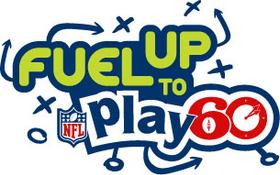For the 2025 school year, there are 2 public middle schools serving 773 students in 35555, AL.
The top ranked public middle schools in 35555, AL are Hubbertville School and Fayette Middle School. Overall testing rank is based on a school's combined math and reading proficiency test score ranking.
ÎÛÎÛÂþ» middle schools in zipcode 35555 have an average math proficiency score of 22% (versus the Alabama public middle school average of 21%), and reading proficiency score of 44% (versus the 46% statewide average). Middle schools in 35555, AL have an average ranking of 6/10, which is in the top 50% of Alabama public middle schools.
Minority enrollment is 16% of the student body (majority Black), which is less than the Alabama public middle school average of 45% (majority Black).
Best 35555, AL ÎÛÎÛÂþ» Middle Schools (2025)
School
(Math and Reading Proficiency)
(Math and Reading Proficiency)
Location
Grades
Students
Rank: #11.
Hubbertville School
(Math: 23% | Reading: 49%)
Rank:
Rank:
6/
Top 50%10
7360 County Road 49
Fayette, AL 35555
(205) 487-2845
Fayette, AL 35555
(205) 487-2845
Grades: PK-12
| 429 students
Rank: #22.
Fayette Middle School
(Math: 21% | Reading: 41%)
Rank:
Rank:
5/
Bottom 50%10
418 3rd Ave Ne
Fayette, AL 35555
(205) 932-7660
Fayette, AL 35555
(205) 932-7660
Grades: 5-8
| 344 students
Frequently Asked Questions
What are the top ranked public middle schools in 35555, AL?
The top ranked public middle schools in 35555, AL include Hubbertville School and Fayette Middle School.
How many public middle schools are located in 35555?
2 public middle schools are located in 35555.
What is the racial composition of students in 35555?
35555 public middle schools minority enrollment is 16% of the student body (majority Black), which is less than the Alabama public middle schools average of 45% (majority Black).
Recent Articles

Texas Schools: The Voucher/School Choice Debate
The issue of school choice and a voucher system is currently being revisited in Houston and across the state of Texas, with strong opinions on both sides of the debate.

Fuel Up to Play 60 Focuses on Integrating Fitness and Wellness into the School Day
What if NFL players came to your school? With the Fuel Up to Play 60 program, sponsored by the National Dairy Council and the NFL, nutrition and exercise are promoted during the school day. NFL players participate in the program by coming to schools and talking to students about fitness. Learn more about the program and some of the schools that are implementing it.

What Parents Need to Know About Lunch Shaming
Students all over the nation go hungry every day not because their schools don’t offer lunch, but because they refuse them to children with outstanding debts. Read on to learn about the horror that is lunch shaming and what can be done about it.
